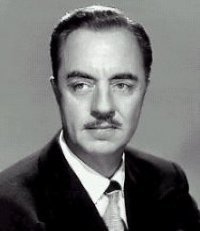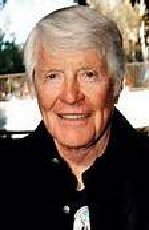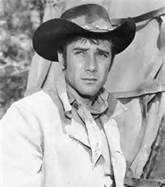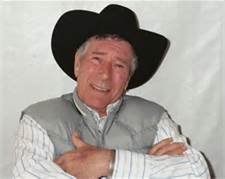Darts or dart-throwing is a competitive sport in which two or more players bare-handedly throw small sharp-pointed missiles known as darts at a round target known as a dartboard.
Points can be scored by hitting specific marked areas of the board, though unlike in sports such as archery, these areas are distributed all across the board and do not follow a principle of points increasing towards the center of the board. Though a number of similar games using various boards and rules exist, the term "darts" usually now refers to a standardized game involving a specific board design and set of rules.
Darts is both a professional shooting sport and a traditional pub game. Darts is commonly played in the United Kingdom and the Republic of Ireland, and recreationally enjoyed around the world.
The original target in the game is likely to have been a section of a tree trunk, its circular shape and concentric rings giving rise to the standard dartboard pattern in use today. An older name for a dartboard is "butt"; the word comes from the French word but, meaning "target" or "goal".
The standard numbered point system is attributed to Lancashire carpenter Brian Gamlin, who devised it in 1896 to penalise inaccuracy, though this is disputed. Many configurations have been used, varying by time and location. In particular, the Yorkshire and Manchester Log End boards differ from the standard board in that they have no triple, only double and bullseye. The Manchester board is smaller than the standard, with a playing area of only 9.8 inches across, with double and bull areas measuring just 0.16 inches. The London Fives board is another variation, with only 12 equal segments, with the doubles and trebles being a quarter of an inch wide.
Mathematically, removing the rotational symmetry by placing the "20" at the top, there are 19!, or 121,645,100,408,832,000 possible dartboards. Many different layouts would penalize a player more than the current setup; however, the current setup actually does the job rather efficiently. There have been several mathematical papers published that consider the "optimal" dartboard.
Before World War I, pubs in the United Kingdom had dartboards made from solid blocks of wood, usually elm. But darts pocked the surface of elm such that it was common for a hole to develop around the treble twenty. The other problem was that elm wood needed periodic soaking to keep the wood soft.
In 1935, chemist Ted Leggatt and pub owner Frank Dabbs began using the century plant, a type of agave, to make dartboards. Small bundles of sisal fibers of the same length were bundled together. The bundles were then compressed into a disk and bound with a metal ring. This new dartboard was an instant success. It was more durable and required little maintenance. Furthermore, darts did little or no damage to the board; they simply parted the packed fibers when they entered the board.
The earliest darts were stubs of arrows or crossbow bolts. The first purpose-made darts were manufactured from solid wood, wrapped with a strip of lead for weight and fitted with flights made from split turkey feathers. These darts were mainly produced in France and became known as French darts. Metal barrels were patented in 1906, but wood continued to be used into the 1950s.
The first metal barrels were made from brass which was relatively cheap and easy to work. The wooden shafts, threaded to fit the tapped barrel, were either fletched as before or designed to take a paper flight. This type of dart continued to be used into the 1970s. With the widespread use of plastic, the shaft and flight came to be manufactured separately, although one-piece moulded plastic shaft and flight darts were also available.
The WDF uses the following standards for play:
- Height: the dartboard is hung so that the center of the bull's eye is 5 ft 8 inches from the floor. This is considered eye-level for a 6-foot tall person.
- Distance: the oche (line behind which the thrower must stand should be 7 ft 91⁄4 inches from the face of the board. If the face projects outward from the wall, due to the thickness of the board and/or a cabinet in which it is mounted, the oche must be moved back appropriately to maintain the required distance.
The regulations came about due to the United Kingdom and the rest of the world playing at different lengths, with 7 ft 91⁄4 inches being the compromise length.
If you want to read a whole lot more about darts, go here:
https://en.wikipedia.org/wiki/Darts
Wow! A side dish that's French-simple, French-fancy! It's Really Rich Rice. Even those people who don't usually eat rice will like rice made this way. And making it ahead of time and rewarming it in the oven or microwave can make it easier for us.
- 1 large onion, diced
- 2 tablespoons butter
- 2 cups cooked white rice
- 2 eggs, beaten
- 1 cup milk
- 1 cup (4 ounces) shredded Swiss cheese
- 1/4 teaspoon salt
- Pepper to taste
- Chopped fresh parsley for garnish
- Paprika for garnish
- Preheat oven to 375º. Coat a 1-1/2-quart baking dish with cooking spray.
- In a large skillet, saute onion in butter 5 to 7 minutes, or until golden. Stir in remaining ingredients except parsley and paprika; mix well then pour mixture into baking dish.
- Bake 20 to 25 minutes, or until set. Garnish with parsley and paprika and serve.
- The origin of lasagna is debated with varying theories.
- Initially, the word lasagna referred to the pot in which the dish was cooked rather than the food.
- A 14th-century English cookbook featured a recipe for lasagna.
- Even cartoon characters enjoy the dish. Garfield, the cat, declares his love for lasagna in the cartoon strip with his name.










1 comment:
You hav left me with a conundrum. Lasagna or the rice casserole?
I think I will solve by adding the veggies used to make lasagna to the rice.Exchange the Swiss cheese for the combination of Italian varieties in your text.
NASA working with JPL and Cal Tech is successful example of the synergy possible from public-private partnership.
The rise of Adolf Hitler should forever be a warning about the dangers of personality-driven politics.
Post a Comment